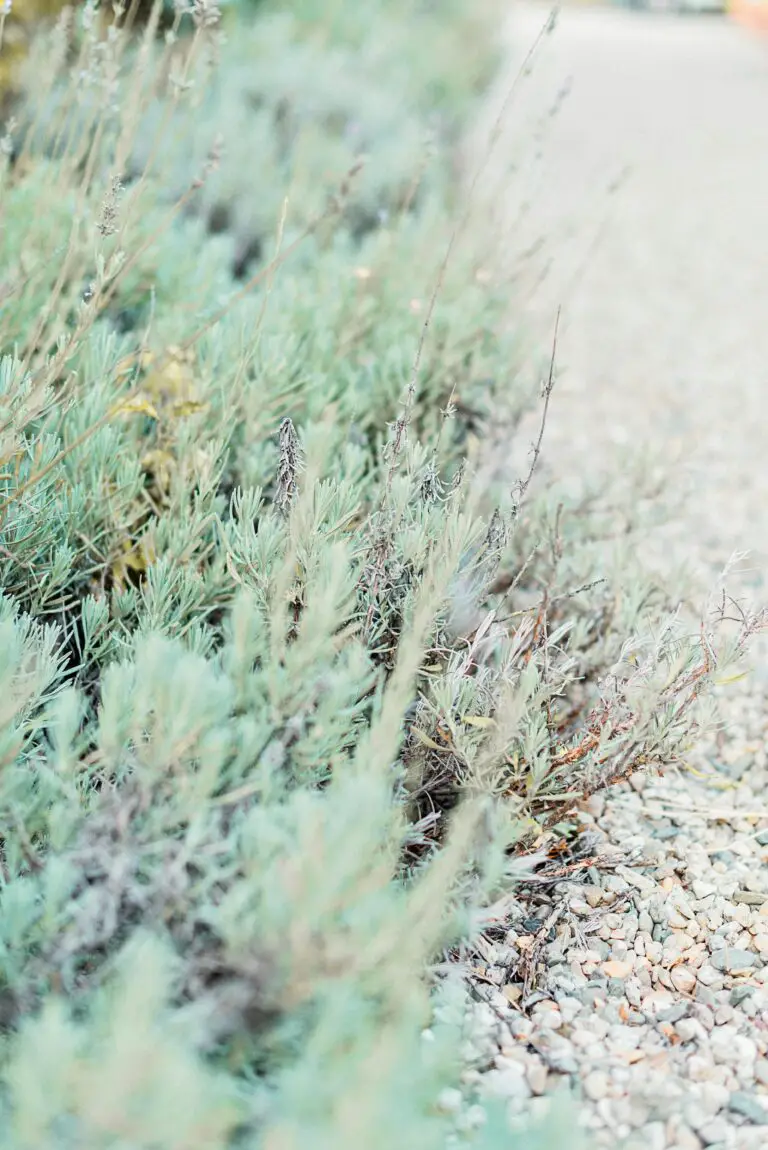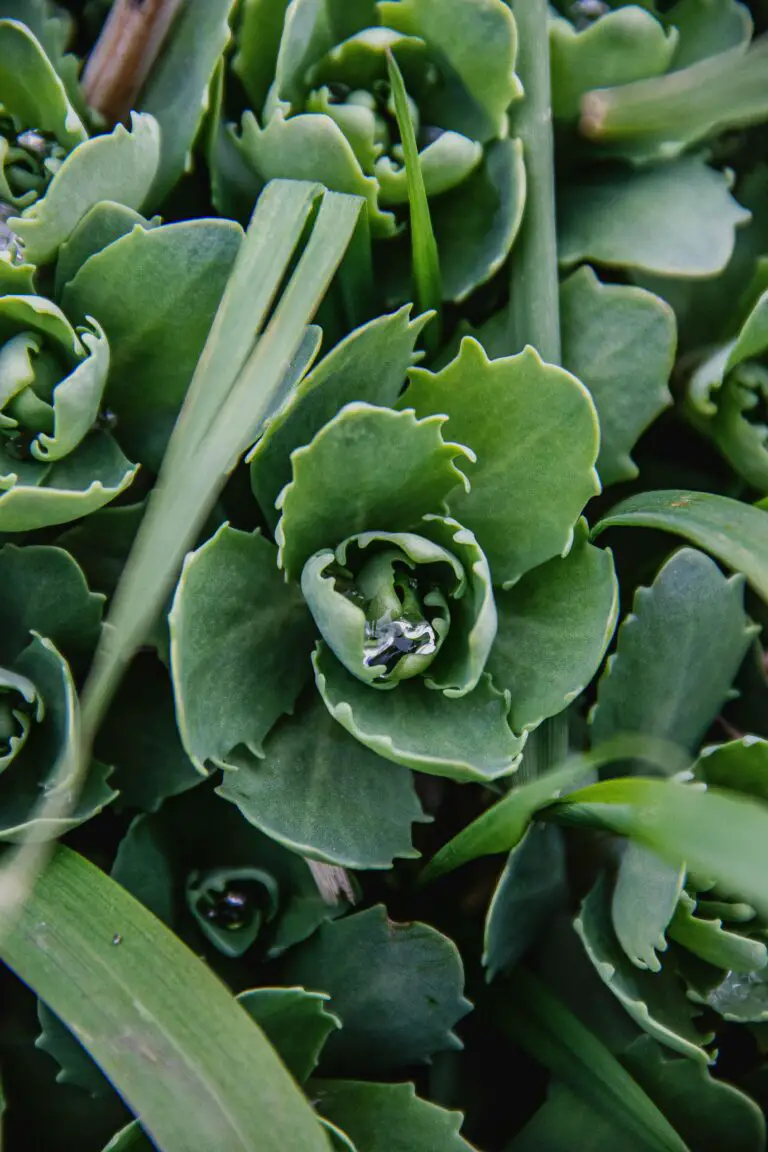Understanding Sedum: An Introduction
Picture this: a lush carpet of chubby leaves sprawling across your garden, crowned with starburst flowers that seem to hold the summer sun in their petals. That, my friends, is the delightful sedum plant. Often hailed as a gardener’s best friend for their hardy nature and drought resistance, sedums are a favorite in rock gardens, containers, and borders alike. Their appeal doesn’t end at just being pretty faces; sedum plants are incredibly undemanding, making them a top choice for both green thumbs and those cursed with the touch of plant doom.
Imagine tiny succulents like Sedum “Tokyo Sun” creating a neon yellow glow among your stones or the taller Sedum “Autumn Joy” standing like soldiers with heads full of rustic flowers. What’s not to love? Sedum plants encompass a variety of forms, from ground-hugging mats to bushy clumps, and they’re not just green. Some have shades of red, purple, and even blue — it’s like Mother Nature’s own crayon box.
Here’s where they really shine: sedums are perennial, returning each year to brighten your garden. They are simple to propagate, so creating a sea of sedum is as easy as a summer breeze. For more playful patterns in your green space, mix them with different textures, like the feathery fronds of ferns or the wispy wands of ornamental grasses. By exploring effective watering techniques, you can ensure that your sedum stands tall rather than taking an untimely bow.
Their popularity doesn’t just stem from their good looks and easy-going nature. Many sedums are champions of attracting pollinators, making your garden a buzz with life and supporting the local ecosystem. Whether in full sun or partial shade, well-drained soil is their best friend. Still, they’re not overly fussy about their bed—give them some love and a bit of ground to call their own, and sedum will thrive.
Something fascinating about sedums is how their appearance changes with the seasons. Spring brings fresh growth, summer ushers in vibrant blooms, and fall transitions them to rich, fiery hues before winter’s rest. Every season with sedum is like a new chapter in a beautifully illustrated storybook that you can’t put down.

The Anatomy of a Sedum Plant
Ever wondered why your sedum, that champion of drought-tolerance, sometimes seems to take a tumble? Let’s peel back the petals on this one. The sedum, known for its resilience, might have an Achilles heel—or should we say stem? Imagine a sun-loving plant that is voracious for light, growing eagerly towards the rays. This enthusiasm, while admirable, can sometimes lead to an overzealous stem that’s more Gumby than Superman.
The stems, which are like the plant’s bones, have to support a surprising amount of weight. Sedum leaves can be quite plump, thanks to their succulent nature—like nature’s water balloons. But when these leaves are packed tightly together at the tips of the stems, it’s akin to a crowd of people trying to get the best view at a concert; something’s gotta give, and often it’s the stems that give out, causing the plant to flop over, defeated by its own success.
But it’s not just about the stems. The foliage is a sedum’s pride and joy, yet they can sometimes work against them. Sedum leaves are designed to store water, making them heavy. Picture a trapeze artist attempting to perform with weights strapped to their wrists—a tricky feat, right? That’s your sedum striving to stay upright with its well-fed leaves.
But fear not, faithful garden enthusiasts, for understanding a sedum’s top-heavy quandary is half the battle. There are ways to prevent your sedum from falling over, which we touch on in other sections of our gardening explorations. For a deeper dive into the art of keeping your sedum perky, there’s plenty to be discovered. Meanwhile, for inspiring insights on where to plant sedum for lush gardens, follow this trail for a trove of tips and techniques. Let your gardening adventure continue with the assurance that with a little know-how, the sedums’ topple can be but a minor hiccup on the path to a show-stopping garden display.
Common Causes for Sedum Collapsing
Have you ever witnessed the sad sight of a sedum plant, once sturdy and upright, suddenly slumping over in what can only be described as a botanical fainting spell? If you have, rest assured, you’re not alone. There’s a handful of common culprits behind the toppling of these succulent beauties, and I’m here to unravel the mystery for you.
Overwatering: The Sedum’s Soggy Nemesis
Let’s imagine a sedum plant soaking its roots in a puddle of water, with all the enthusiasm of a child jumping into a pool. Sounds refreshing, right? Wrong. Sedum plants prefer to keep their feet dry, thank you very much. These are succulents that store water in their leaves, so when they’re drowning in H2O, they become the botanical equivalent of a waterlogged sponge. The leaves swell up, heavy and bloated, and before you know it – timber!
In Search of the Sun: When Sedums Get Shady
Picture a sedum straining its leaves towards the sun, like a sunbather angling for that perfect tan, but then left under the shade of a beach umbrella by mistake. Without enough sunlight, these plants get leggy, reaching for the light until they lose their balance. They need that golden glow to keep them short, sweet, and stable. Without it, they’ll stretch themselves right into a topple.
Soil: The Foundation of Stability
Now, let’s talk dirt. Soil, that is. Sedum plants need the right soil mix as much as a ballerina needs a solid stage to perform. If the ground is too compact or rich, our poor sedums can’t anchor themselves properly. They end up like a tower built on a bed of marshmallows – wobbly and doomed to fall over.
The Top-Heavy Tango
And sometimes, a sedum just grows too much of a good thing. You know, like when you put one too many ornaments on the top of a Christmas tree, and the whole thing takes a dive. Sedums can grow lush, heavy heads of foliage and flowers that their stems simply can’t support, leading to an unscheduled bow to the earth. It’s Mother Nature’s way of saying, “Easy on the top-dressing, folks.”
If you’re looking for further tips on the timing and care for your sedum, do check out our comprehensive guide that dives into the nuances of planting these resilient succulents.
Understanding these pitfalls is the first step to keeping your sedum upright. Now, if you’re wondering how exactly to prevent these scenarios, stay tuned as we dig into preventative measures in the next section. But if you’re craving a bit more visual guidance on sedum care, take a peek at this informative video:
Cultural Practices That Affect Sedum Stability
Let’s cut to the chase—your sedum’s slouch is no accident. There’s a world beneath those succulent leaves that’s buzzing with activity, and it’s shaped by your daily gardening choices. The secret to a stalwart stand of sedum? It’s all in the cultural practices. Watering and fertilizing, done right, can bolster your plant like a shield against the forces of nature that push and pull. So, what’s the trick to keeping your sedum upright and shipshape? Let’s dig into the nitty-gritty of nurturing these hardy beauts!
Watering Woes: The Balancing Act
Ever seen a sedum sway more than a hula dancer on a windy beach? Chances are, it’s crying out for a drink or drowning in too much H2O. These hardy perennials thrive on a ‘Goldilocks’ watering routine—not too much, not too little. Imagine a scenario where Sam the Sedum gets a splash daily—it’s a first-class ticket to ‘flop city’ because soggy roots make for a weak base. On the flip side, picture Pat the Parched Plant left dry as a bone in a summer sizzle, and you’ll see stems keeling over in fatigue. Striking the right balance keeps things tight and tidy at the base, giving your sedum the stiff upper stem it deserves.
The Fine Line of Fertilizing
You might think feeding your sedum is like giving it a boost of superpowers, but it’s not that simple. A little nutrition goes a long way, but haul out the heavy artillery of rich fertilizer, and you’ll have a plant that grows faster than it can support itself. Sally Sedum slathered in fertilizer is like a bodybuilder with all bulk and no balance—top-heavy and prone to tipping. It’s like building a skyscraper on stilts. What you want is a steady, sturdy growth that resists whipping winds and casual bumps. A sprinkle of compost or a thoughtfully timed gentle feed keeps your sedum strong-rooted and stable, without the theatrics of a topple.
Remember, your sedum’s stability starts with your gardening groove. By being judicious with water and wise with nutrients, you set the stage for a performance where sedum takes the spotlight, standing tall and proud, come rain or shine. Keep your cultural practices savvy, and watch your garden turn into a bastion of sedum beauty—solid as a rock and twice as pretty!
Choosing the Right Environment for Your Sedum
Ever noticed how a well-established sedum appears to sashay gently in the breeze, yet others may slump over as if trying to escape the confines of the garden? The secret to a sedum that stands tall is no secret at all—it’s all about planting these succulent beauties in their ideal home. So, green thumbs, let’s talk dirt, sun, and surroundings!
Imagine a sedum basking in the glory of the golden sun; that’s how much these plants love their light. Aim for a location that guarantees at least six hours of sunlight. Sunlight is like a comforting embrace—it strengthens their stems and keeps them reaching upward like an eager student in a classroom.
Now, soil—the foundation of any garden’s success—needs special consideration for sedum plants. What you’re looking for is a well-draining stage where water doesn’t linger, but takes a bow and exits promptly. Soil that’s too clingy and damp is a fast track to sedum despair, causing the bases to become as weak as overcooked spaghetti.
Think of your sedum as the Goldilocks of the plant world; it wants its environment just right. A spot with the sun on its shoulders and feet in soil that’s like crumbly pie crust, not too wet, not too dry, is the winning ticket. Your sedum won’t just stand; it will stand out!
But remember, like people, each sedum plant can have its own personality. Some like it hot and dry, while others prefer a touch more moisture. Keep an eye on your green buddy and be ready to make a change. Sometimes moving a plant just a few feet can turn the tide in the battle against the topple.

Envision your garden with sedum that stands proudly, not slumped over like a teen avoiding chores. With the right amount of sunshine on their upturned leaves, the proper soil under their roots, and your attentive care, sedum can be the low-maintenance, high-drama showpiece in your garden tableau. Go on, cultivate that green thumb, and bring equilibrium to your garden—your sedum will thank you with an upright salute!
Plant Support and Pruning Techniques
Picture this: You’ve just finished planting a bevy of beautiful sedums in your garden, anticipating the lush carpet of foliage and starry flowers. Fast forward a few weeks, and instead of being greeted with upright mounds of greenery, you find your sedums in a disheartening sprawl! Does this sound familiar? You’re not alone, and the good news is, with a bit of know-how, you can prevent your sedum from falling all over. Let’s explore some night-and-day transformation techniques that’ll keep your sedum standing tall and proud!
Think of sedums like the free-spirited kids of the plant world — they grow eagerly, reaching for the sun with wild abandon. But without a little guidance, they can lose their balance and flop over, much to a gardener’s dismay. This is where plant supports come into play. Whether you’re crafting a DIY support system with bamboo sticks and twine or using aesthetically pleasing metal frames, your sedums will thank you for the helping hand. It’s like adding an invisible friend that holds your plants up while still allowing their natural beauty to shine through.

Pruning can also play a starring role in the structural integrity of your sedum. While it might feel counterintuitive to snip away at your plant, strategic pruning encourages a bushier growth habit that can resist toppling. Think of it as a plant’s version of a workout routine — it toughens them up and keeps them fit. Early in the season, trim back the tips of the growing sedum to encourage a sturdier, more compact form. It’s a simple trick, with effects that are anything but trivial, resulting in a plant that stands up to its full potential, quite literally!
Don’t let your sedum’s tipping tendency turn your garden dreams into a weedy nightmare! Arm yourself with some sturdy supports and a pair of pruners, and you’ll set the stage for sedum success. By the time the growing season reaches its peak, your sedum will be the upright centerpiece of your garden theater, earning a standing ovation from every onlooker. So go ahead, support and prune with confidence — your garden will be all the better for it!
Managing Overgrown Sedum Plants
Have you ever had that garden envy when you see those impeccably manicured landscapes? Well, what if I told you that you could get your sedum to stand proud too, without the droop? It’s all about the right moves at the right time. Let’s chat about the “hows” and “whys” when your sedum is waving the white flag of surrender to gravity.
Picture this – your once compact, perfectly tufted sedums are now sprawling all over, as if they’ve decided to take a lazy nap in your garden. Not the look you were going for, right? Well, it’s quite common for sedum, especially the taller varieties, to take a tumble as they bloom into their full glory. But, fear not, my fellow green thumbers! The solution to those toppling beauties can be quite straightforward – a little bit of division and replanting.
Now, let’s slice into the greenery like you’re the neighborhood’s go-to garden surgeon. Dividing your sedum can rejuvenate the plant, allowing you to control its size and promote healthier, more robust growth. The trick here is to wait for the right time, say early spring or autumn. You want to gently lift the plant, tease it apart into sections, and find them a new cozy plot of earth. This is not only a rescue mission for the plants that have grown too big for their britches but also a fantastic way to spread the beauty around your garden.
By dividing and replanting, you essentially give each sedum its own space to shine, and you extend the reach of their aesthetic appeal. Real-life gardening success stories have shown that with this simple method, sedum can transform from an overgrown mess to a garden centerpiece that commands attention. Plus, it’s like hitting the refresh button for your sedum – they’ll grow back stronger, less likely to flop, and more, shall we say, upright in their garden bed performances.
Now, if you’re a visual learner and want to see this process in action, have I got a treat for you! Check out this video where you can watch and learn how to manage your overgrown sedum and get them back to standing tall, just how we want them!
Remember, gardens are living art. They’re meant to evolve, grow, and change. When your sedum starts to fall over, it’s not the end; it’s merely an opportunity to flex those green muscles and sculpt your garden into a masterpiece once again. So roll up your sleeves, grab your gardening tools, and show your sedum who’s boss!
FAQs: Expert Answers to Your Sedum Concerns
Q: Why does my sedum keep tipping over, and how can I keep them standing tall?
A: Those lush, chubby sedum plants can sometimes get a little too top-heavy, especially if they’re happily soaking up the sun and growing their hearts out. Too much of a good thing, like fertilizer or water, can actually weaken the stems. Think of it like a well-fed tomato plant without a cage—it’s a leaning tower of pizza waiting to happen! To prevent your sedums from flopping, give them a nice, sunny spot with well-drained soil, and consider dialing back on the pampering. Just like a sturdy tree, a sedum with a tough life grows strong roots (and stems).
Q: Are there specific varieties of sedum that are more prone to falling over?
A: Absolutely! Some sedum varieties, like ‘Autumn Joy’, are notorious for their enthusiastic sprawl come bloom time. The larger and flatter the flower heads, the more likely you’ll see them doing the limbo by the end of summer. On the flip side, varieties like ‘Dragon’s Blood’ tend to stay more compact and upright. When selecting your sedums, think about how they’ll fit into the garden’s equilibrium—or prepare to prop them up like a sagging shelf!
Q: Can pruning help my sedum keep its composure?
A: Pruning is like a secret superpower for sedum. A strategic snip in early summer—also known as the “Chelsea chop” (named after the famous flower show, not my neighbor Chelsea who never returns the garden shears) can encourage your sedum to bush out rather than shoot up. It’s like giving your plant a motivational talk about not growing too fast and losing balance—it listens and stays more compact and less likely to topple.
Q: What if my sedum has already fallen, can I save it?
A: It’s not all doom and gloom for your cascading sedum! If they’ve gone over the edge, you can often just prop them back up with some plant stakes or a peony ring. It’s like helping a friend after they’ve tripped—dust them off, give them support, and they’ll be back to partying in no time. And remember, sedum is hardy, so don’t fret too much; they’re the cool plants that bounce back after a little tumble.
Visual Tips for Keeping Sedum Upright
Sometimes, seeing is believing—and doing! Here’s a handy video that’ll show you the ropes when it comes to propagating and managing your sedum, ensuring it stays upright and looking fabulous in the garden.



